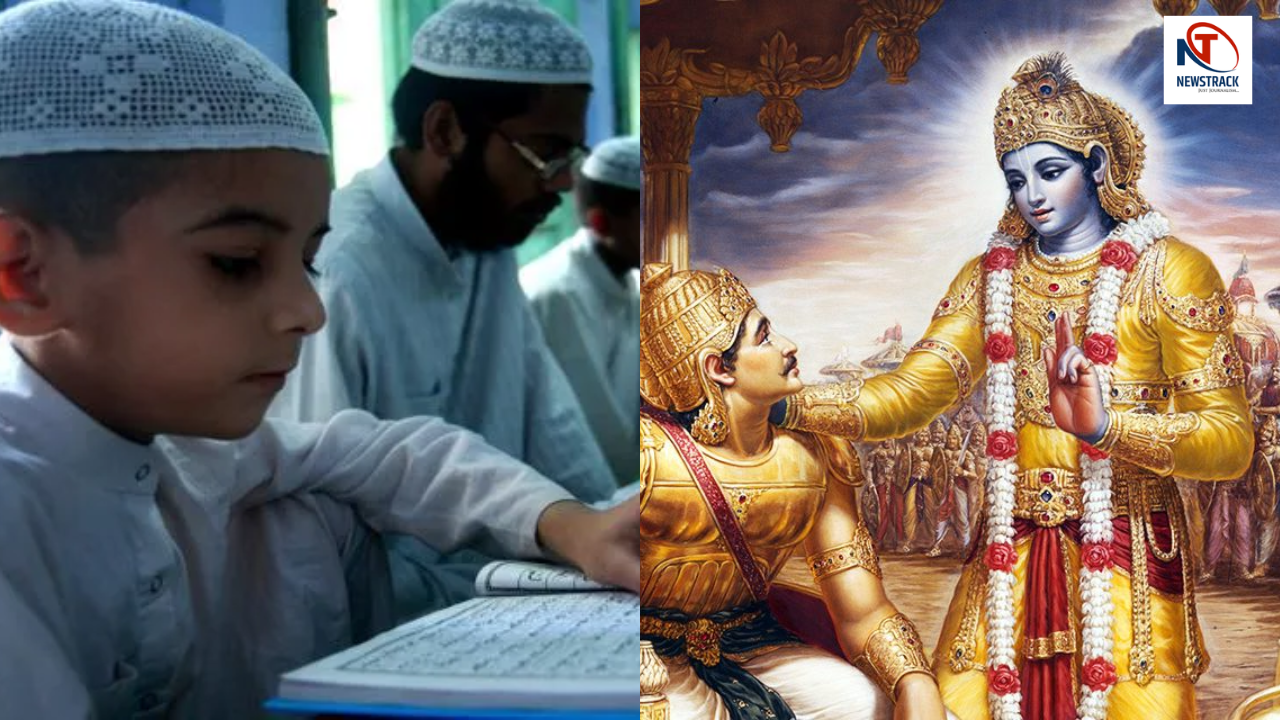During the morning prayer in the schools of Uttarakhand, children will be taught the verses of Srimad Bhagwat Gita. The Uttarakhand government has issued an order for this. The state education department and the Chief Minister have taken this important decision together, which will soon be seen in 17 thousand government schools of the state. Uttarakhand Chief Minister Pushkar Singh Dhami took this decision during a review meeting regarding this decision. This decision of the state government has been welcomed by the Madrasa Board Chairman Mufti Shamoon Kazmi.
Madrasa Board Chairman welcomes CM Dhami’s decision
State President of Madrasa Board Mufti Shamoon Kazmi has praised this decision of the Uttarakhand government. He said that Uttarakhand is moving towards rapid development under the leadership of Chief Minister Pushkar Singh Dhami. He is happy that now Srimad Bhagwat Gita will be taught in schools under the course. Mufti Shamoon Kazmi said that it is very important to know people about Shri Ram’s life and understand the messages of Shri Krishna. This will increase brotherhood in the society. He also said that the decision to do an MoU from Sanskrit department for teaching Sanskrit in madrasas was also taken with this purpose.
What did Mufti Shamoon Kajmi say?
Mufti Shamoon Kazmi said that this decision will increase communal harmony in the state and will develop the state. People who were creating distance between us will be far away. He also said that we are also providing benefits of these things to the children of madrasas. On the decision to teach Bhagavad Gita in all government schools of the state, CM Dhami said, “Bhagavad Gita is a sacred book in which Lord Krishna has given important knowledge of life to Arjuna. This knowledge is useful for life, if it is read correctly. We have decided in the review meeting of the Education Department that the Gita will be read in all the schools of the state, and this process has started.
What is taught in madrasas of India so far?
The main objective of education in the madrasas of India is to promote religious education and rituals. Most of the Muslim community children get education here.
Quran and Hadith education
In madrasas, children are first trained in the Quran. At the same time, the hadith (Islamic traditions and words) are also taught so that students can understand religious life properly.
Arabic language
Since the Quran and Hadith are in Arabic language, Arabic language education is also imparted in madrasas. This helps children to understand and read religious books properly.
Islamic history and culture
In madrasas, Islamic history, culture and religious programs are also taught, so that children can have knowledge of their religious identity and heritage.
Sanskrit education
Sanskrit is also taught in some madrasas, so that children can become familiar with Indian culture and Sanskrit literature. This education helps in understanding the prosperity of Indian culture.
general education
In recent years, some madrasas have also included modern education like mathematics, science, Hindi, English, social studies etc. so that students can do well in the modern world as well. This traditional education is imparted in the madrasas of India, but now some madrasas are also combining modern education with change, so that children can get both religious and social education.










